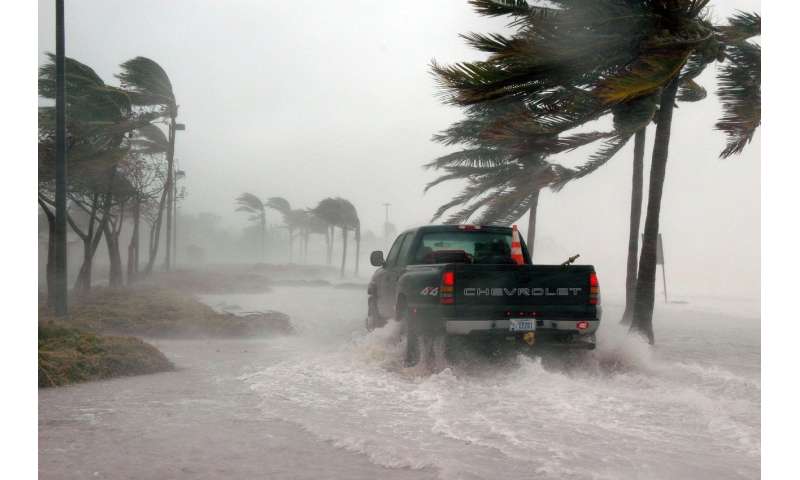Whether it's a hurricane, an active shooter, or a pandemic, we must reconsider campus emergency planning

When it comes to emergency preparedness, universities and colleges understand the importance of having policies, protocols and procedures in place to minimize damage, prevent tragedies and ensure a safe environment for staff and students who work and live on campus. Campus emergency planning is a complex process due to the enormous number of existing and potential threats. Universities and colleges around the country must plan to deal with different kinds of emergencies, ranging from natural hazards, such as hurricanes and pandemics, to man-made disasters, such as active shooters.
Many college students expect universities to prepare them for emergencies, which explains why students are repeatedly found not to be competent in preparing for emergencies. Several factors affect the vulnerability of college students to the adverse impacts of threats and hazards, including lack of social networks, experience with natural hazard events, financial well-being, preparedness competency, and most importantly, risk perception. Students have been found to have low risk perception, and their behavior is affected by an optimism bias, whereby they recognize the severity of the threat to others but not themselves.
Campus emergency preparedness falls into five main categories:
(1) Prevention; this refers to actions to prevent future threats and emergencies from happening. (2) Protection; this focuses on present actions protecting students and staff from threats or hazards. (3) Mitigation; this refers to institutional capacity to reduce the loss of life and property damage by lessening the emergency impact. It refers also to reducing the possibility that a threat will happen. (4) Response; this refers to having the necessary capabilities to establish a safe environment, stabilize an emergency, save lives and property, and also facilitate a smooth transition to recovery. And (5) Recovery; this refers to restoring the learning environment.
Currently, as the COVID-19 pandemic is affecting campuses around the globe, universities and colleges have been working around the clock to implement emergency plans that reduce the pandemic impact on students and staff. Many decisions have been made about restricting activities, transitioning to online education, closing campuses and canceling sports events. At the same time, universities and colleges are balancing the potential negative consequences caused by such decisions, including physical and mental challenges facing their staff and students, as well as decreased admissions, enrollment and finances.
Even with great resources provided against emergency scenarios, significant gaps still exist. In order to effectively function in a precise and timely manner, emergency planning at campuses should be tailored to fit the entire student body. Available research has shown that emergency planning at U.S. campuses lacks specificity, which makes emergency management less effective before, during and after disasters. The lack of research from the students' perspective represents another challenge to preparedness. For disaster preparedness efforts to be effective, input and insight from all groups on campus must be considered to craft the most effective emergency planning and recovery measures. There is considerable room for improvement in how these institutions operate in times of disasters.
Effective crisis management and development of campus emergency operations are not done in isolation. U.S. colleges and universities play a critical role in serving as main emergency management partners to state, local, federal and private-sector institutions. It is essential that U.S. campuses work with their community partners such as first responders, public health officials, mental health officials, emergency managers, local community organizations and government officials during the planning process to integrate with state, regional and community plans. These collaborations make more resources accessible and help to ensure the smooth integration of all partners and responders. Moreover, in order to have effective crisis management on campus, universities and colleges will benefit from conducting regular studies to find new ways to actively involve the different groups on campus in the crafting process of crisis management. By doing so, the success of the process becomes a shared responsibility between students, staff, and campus administration.
This story is part of Science X Dialog, where researchers can report findings from their published research articles. Visit this page for information about ScienceX Dialog and how to participate.
More information:
Amer Hamad Issa Abukhalaf et al, Assessing international students' vulnerability to hurricanes: University of Florida case study, International Journal of Disaster Risk Reduction (2022). DOI: 10.1016/j.ijdrr.2022.102812
Amer Hamad Issa Abukhalaf is a researcher at the Florida Institute for Built Environment Resilience (FIBER), and he studies disasters with a focus on emergency management and sustainable solutions. Amer is a civil engineer and a structural designer by practice, and he received his master's degree in executive management from Ashland University in Ohio, where he double majored in project management, and operation & logistics. Currently, Amer is pursuing a Ph.D. degree from the Design, Construction, and Planning College at the University of Florida.